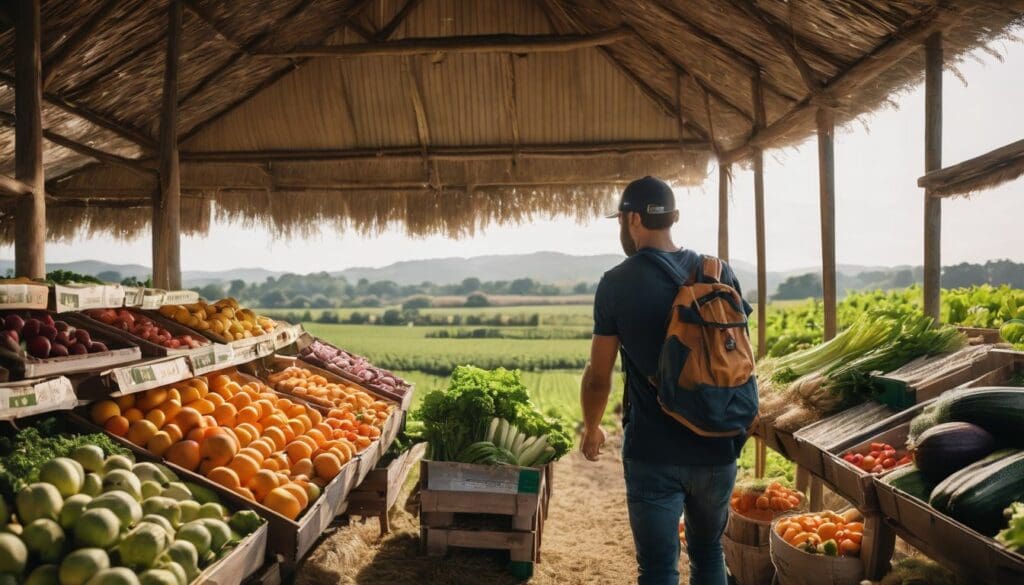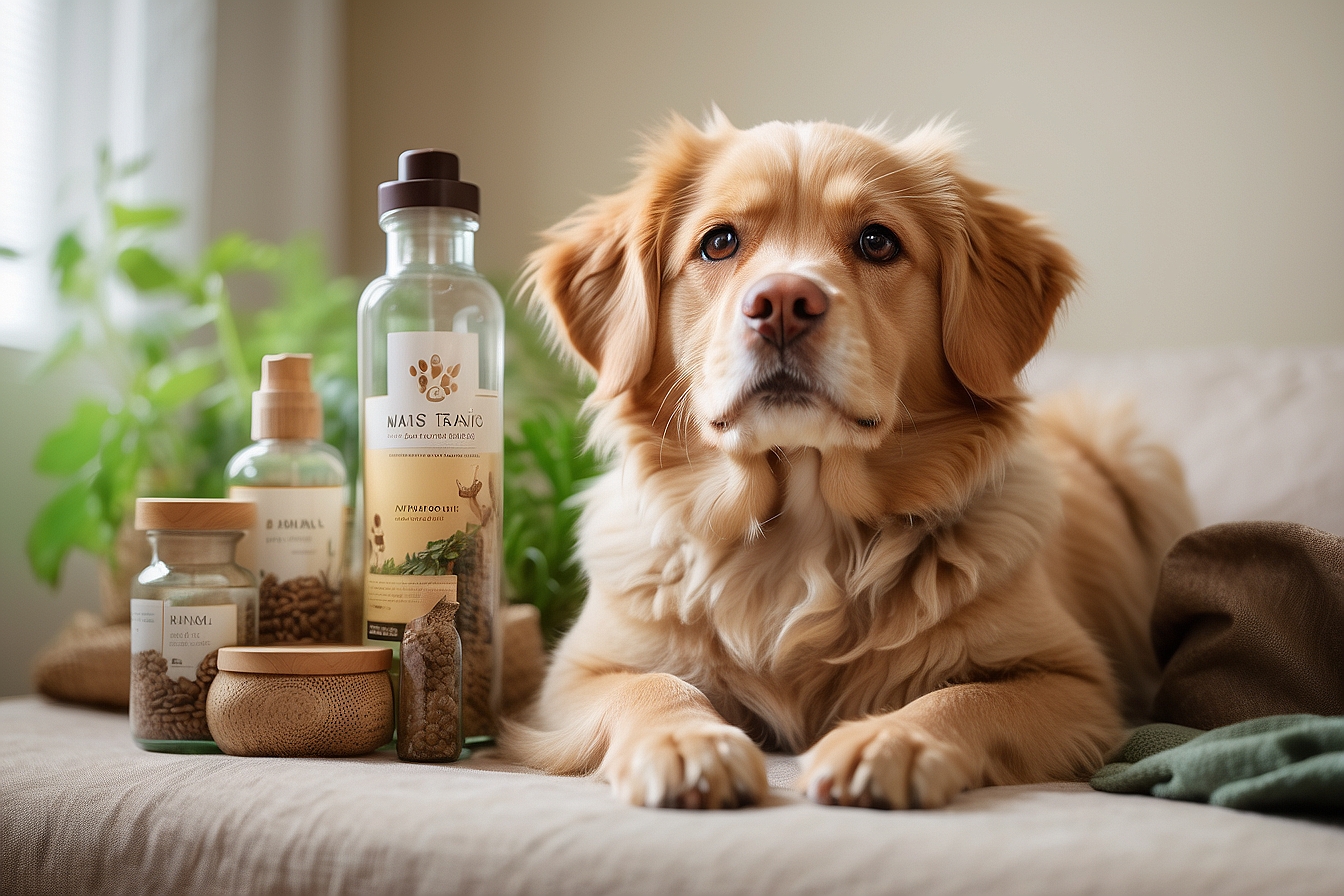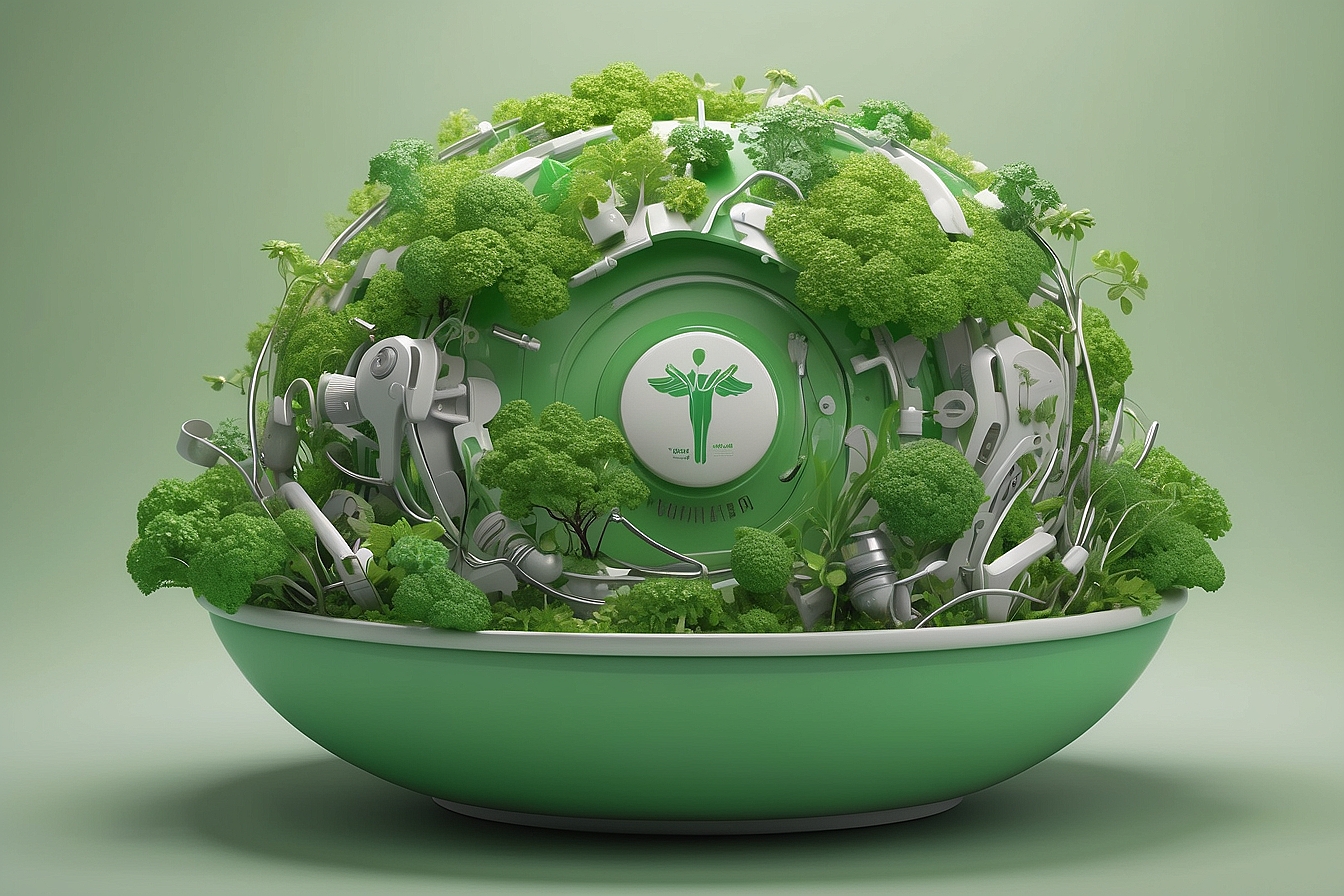We’ve all found ourselves pausing in the supermarket aisle, contemplating the seemingly endless piles of packaging that accompany our everyday items. It strikes a chord with us too; the way this surplus material weighs not just on our trolleys, but also heavily upon our environment and wellbeing.
Did you know that such packaging accounts for more than a quarter of what we reluctantly shuffle off to landfill? We’ve taken it upon ourselves to delve deeply into alternatives that tread lightly on the earth.
This exploration will furnish you with insights to navigate your choices more wisely. Join us as we uncover more sustainable, health-conscious food packaging options that promise brighter prospects for both people and planet!
Key Takeaways
- Sustainable food packaging reduces the environmental damage caused by traditional materials like plastics, which often end up in landfills and oceans.
- Choosing eco – friendly packaging options like those made from cornstarch, popcorn, or mushrooms can lower our exposure to harmful chemicals and promote better health.
- Innovative brands are already making a positive impact by using biodegradable materials for their products, leading the way towards more sustainable practices in the food industry.
- Aligning with circular economy principles helps ensure that food packaging is reused or recycled, contributing to waste reduction and resource conservation.
- By 2050, adopting sustainable food packaging is expected to considerably cut down carbon emissions and diminish health problems linked to toxic substances in conventional packaging.
The Impact of Food Packaging on the Environment
Excessive use and waste of packaging materials contribute to environmental pollution. Conventional food packaging materials such as plastics, glass, aluminum, paper, and paperboard pose a threat to natural resources and ecosystems.
Excessive use and waste of packaging materials
We often see aisles upon aisles of products wrapped in layers of plastic, paperboard, and other materials that most likely will end up in landfills. The sheer volume of packaging waste overwhelms our planet’s ability to cope.
Each year, millions of tons are discarded without a second thought, piling up and causing severe environmental harm. From choking wildlife to polluting oceans, the consequences are dire.
In our quest for convenience, we sometimes forget that every piece of packaging carries an ecological footprint from production to disposal. It’s not just about the waste itself; it’s also about the energy used to manufacture these materials and the natural resources being depleted at an unsustainable rate.
As responsible people who care deeply for our environment’s future and health-conscious living, we commit ourselves to reducing this burden by making more eco-friendly choices both as consumers and influencers in the market.
Let’s embrace sustainable food packaging solutions like biodegradable alternatives or recyclable options that help us live up to our eco-conscious ideals while still enjoying the foods we love.
Comparison of conventional food packaging materials (plastics, glass, aluminum, paper and paperboard)
As we acknowledge the overwhelming waste of packaging materials, it’s crucial to examine conventional options in food packaging and their environmental footprints. Here’s a comparative look at the most common materials used:
| Material | Properties | Environmental Impact | Recyclability |
|---|---|---|---|
| Plastics | Lightweight, versatile, durable | High; often ends in landfill, ocean pollution, wildlife harm, microplastic issues | Varies; generally low due to types and contamination |
| Glass | Inert, reusable, no leaching | Moderate; energy-intensive to produce but less pollution | High; fully recyclable but heavy, increasing transport emissions |
| Aluminum | Lightweight, impermeable, robust | Moderate; mining impact, high energy for production | High; infinitely recyclable but requires significant energy |
| Paper & Paperboard | Biodegradable, renewable, lightweight | Lower; deforestation risk, lower energy for production | High; widely recyclable but contamination can be an issue |
Moving from the stark reality of these materials’ footprints, we turn our focus to pioneering sustainable alternatives that mitigate these environmental challenges.
The Need for Innovative Sustainable Food Packaging Alternatives
Innovative sustainable food packaging materials, such as cornstarch, popcorn, and mushrooms, offer promising alternatives to conventional packaging. These materials not only reduce food waste and preserve food quality but also address concerns about food safety.
Examples of sustainable food packaging materials (cornstarch, popcorn, mushrooms)
- Cornstarch-based packaging: Derived from natural corn kernels, this material is biodegradable and compostable, reducing environmental impact.
- Popcorn packaging: Utilises the natural properties of popcorn to create a biodegradable and lightweight packaging option that is also edible, minimising waste.
- Mushroom-based packaging: Made from mycelium, the root structure of mushrooms, this material offers a sustainable alternative that is biodegradable and can be used as a protective packaging element.
Benefits for reducing food waste and preserving food quality
Sustainable food packaging offers significant benefits in reducing food waste and preserving the quality of food. By utilising innovative packaging materials, such as biodegradable options made from cornstarch or mushrooms, we can prolong the shelf life of products and reduce spoilage.
This not only helps to decrease the amount of food that ends up in landfills but also supports natural resources conservation, contributing to a healthier environment for all.
Preserving food quality through sustainable packaging solutions also means fewer harmful chemicals and toxins leaching into our foods. With antimicrobial packaging options and ecoconscious materials, we can ensure that our packaged foods remain healthy and safe for consumption.
Embracing these responsible packaging choices aligns with consumer expectations for environmentally friendly practices while promoting health-conscious packaging alternatives.
Addressing food safety concerns
When considering sustainable food packaging, it’s vital to address food safety concerns. Ensuring that the materials used are safe for storing and preserving food is crucial. By opting for eco-friendly packaging materials, we can reduce exposure to harmful chemicals and toxins present in traditional plastics or non-biodegradable packaging.
It’s important to prioritise health-conscious packaging solutions that not only benefit the environment but also safeguard our well-being.
Furthermore, exploring innovative approaches such as biodegradable food packaging and natural alternatives can lead to safer options for storing and transporting food products without compromising on sustainability.
The Benefits of Sustainable Food Packaging for Health
Sustainable food packaging reduces the presence of harmful chemicals and toxins, promoting better health for consumers. By choosing eco-friendly packaging options, we can contribute to a healthier environment and improve our overall well-being.
Reduction of harmful chemicals and toxins
Sustainable food packaging plays a crucial role in reducing harmful chemicals and toxins that can leach into the food we consume. By opting for eco-friendly packaging materials, such as biodegradable plastics, organic paper, or natural fibre-based alternatives, we can minimise our exposure to hazardous substances commonly found in conventional packaging.
These healthier choices contribute to overall well-being by safeguarding the quality and safety of our food, thereby promoting consumer health and environmental sustainability.
Choosing sustainable packaging options is a proactive step towards protecting both human health and the environment. The reduction of harmful chemicals within food packaging aligns with our goal of making responsible and eco-conscious choices for a healthier future.
Impact on human health
Sustainable food packaging positively impacts human health by reducing exposure to harmful chemicals and toxins. Eco-friendly packaging materials help limit the leaching of hazardous substances into food, safeguarding consumers from potential health risks associated with conventional packaging.
By choosing sustainable packaging options, individuals can make healthier choices for themselves and their families.
Furthermore, eco-conscious food packaging alternatives contribute to overall wellbeing by promoting a cleaner environment and minimising pollution, which can have indirect but significant positive effects on human health.
Case Studies: Brands Leading the Way in Sustainable Packaging
We will explore successful sustainable packaging initiatives in the food industry, showcasing leading brands that have embraced eco-friendly and innovative packaging solutions. These case studies will demonstrate how companies are making strides towards reducing their environmental impact through responsible food packaging choices.
Examples of successful sustainable packaging initiatives in the food industry
Many food brands have successfully implemented sustainable packaging initiatives. For instance, Company A has replaced traditional plastic packaging with biodegradable materials made from cornstarch, reducing environmental impact and promoting eco-friendly practices.
Additionally, Company B uses innovative mushroom-based packaging for their products, providing a natural and biodegradable alternative to conventional plastics. These initiatives show the potential of sustainable packaging in reducing waste and supporting conservation efforts.
Moving forward to “The Future of Sustainable Food Packaging”, let’s explore the importance of aligning with circular economy principles and converting agricultural waste into packaging materials.
The Future of Sustainable Food Packaging
We explore the importance of aligning sustainable packaging with circular economy principles and the potential for converting agricultural waste into packaging materials. Early guidance tools for developing and selecting sustainable packaging solutions will also be discussed, along with the expected impacts by 2050.
Importance of aligning with circular economy principles
To create a sustainable food packaging system, we must align with circular economy principles. This involves designing packaging that can be reused, recycled, or composted to minimise waste and preserve resources.
Embracing these principles means transitioning from the traditional linear “take-make-dispose” model to a circular approach where materials are kept in use for as long as possible.
By doing so, we can reduce environmental impact, promote resource efficiency, and contribute to a healthier planet for future generations.
Aligning with circular economy principles ensures that our food packaging solutions are part of a regenerative system rather than contributing to the ongoing depletion of natural resources.
It encourages us to consider the entire lifecycle of packaging materials and adopt strategies that support sustainability at every stage – from sourcing raw materials to end-of-life disposal.
Converting agricultural waste into packaging materials
To create sustainable food packaging, we can repurpose agricultural waste such as rice husks, wheat straw, and sugarcane bagasse. These natural materials possess the potential to be transformed into biodegradable packaging solutions that reduce environmental impact.
By utilising agricultural waste in this manner, we contribute to minimising food waste while promoting eco-friendly production methods. This approach aligns with our commitment to conserving the environment and ensures that our packaging supports sustainable living.
By converting agricultural waste into packaging materials, we are actively contributing to a healthier planet and reducing our reliance on non-renewable resources. The integration of these innovative alternatives is pivotal in formulating an effective circular economy model within the food industry.
Early guidance tools for developing and selecting sustainable packaging solutions
Transitioning from converting agricultural waste into packaging materials, we can explore the early guidance tools for developing and selecting sustainable packaging solutions. Brands and manufacturers keen on ecofriendly packaging need to consider a range of factors.
These include the type of product being packaged, the necessary level of protection, potential environmental impact, cost implications, and consumer preferences. By employing life cycle assessment (LCA) methodologies and eco-design principles, stakeholders can evaluate the environmental impact of various packaging options throughout their entire life cycle.
This enables informed decision-making towards selecting the most sustainable food packaging alternatives that align with circular economy principles.
Expected impacts by 2050
By 2050, the widespread adoption of sustainable food packaging is projected to significantly reduce carbon emissions, landfill waste, and pollution from conventional packaging materials.
This shift will lead to a decrease in health issues related to exposure to harmful chemicals and toxins found in traditional packaging. Moreover, the increased use of eco-friendly packaging alternatives is expected to contribute towards reducing food waste and preserving food quality, thereby positively impacting human health and the environment.
In addition, the transition towards sustainable food storage solutions and environmentally friendly packaging options aligns with circular economy principles. This strategic move could transform agricultural waste into innovative packaging materials further promoting a healthier planet for future generations.
Conclusion
In conclusion, sustainable food packaging is crucial for reducing environmental impact. It offers health benefits by minimising harmful chemicals in packaging materials. Embracing eco-friendly alternatives creates a positive impact on our well-being and the environment.
The shift towards sustainable packaging is essential for a healthier future.
FAQs
1. What is sustainable food packaging?
Sustainable food packaging uses eco-friendly materials that aim to reduce waste and be better for the environment.
2. How does green packaging benefit health?
Healthy food packaging made from organic or natural materials can lower risks of chemicals in our food, making it safer to eat.
3. Can sustainable packaging help with food waste reduction?
Yes, using eco-conscious food packaging often means the materials are compostable, helping to reduce overall food waste when disposed of properly.
4. Are there many ecofriendly alternatives for food packaging?
There’s a variety of eco-friendly options available for businesses like biodegradable containers and recyclable wraps that are also health-conscious.
5. Why should I choose ecoconscious over traditional packing products?
Ecoconscious packages not only support a healthier planet but they also align with the values of consumers who prefer natural and organic products.





